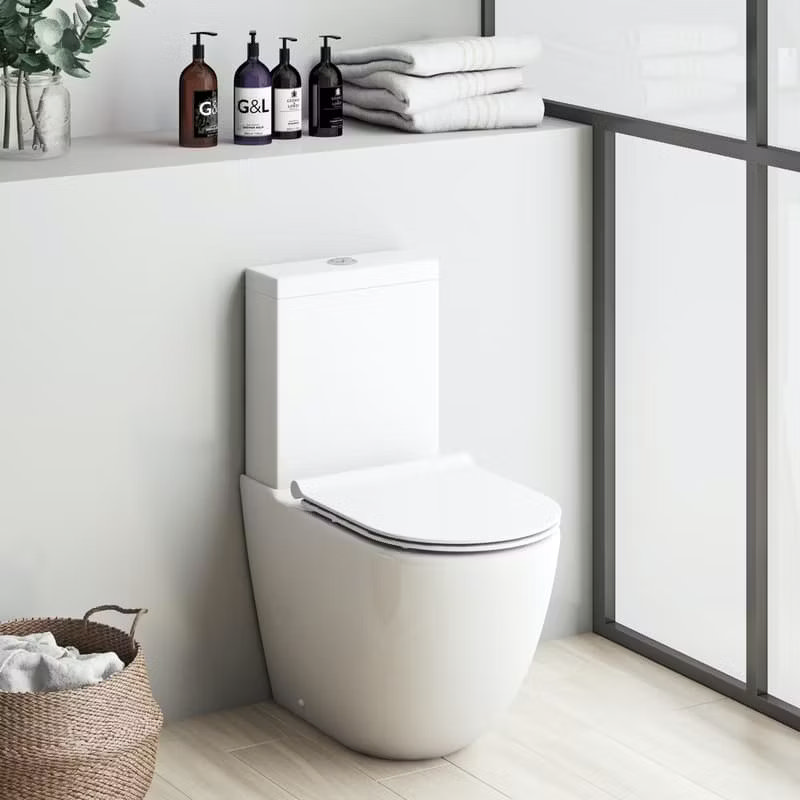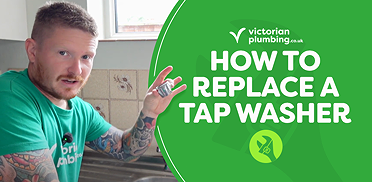OUR BOXING DAY SALE ENDS SOON!
Free delivery on orders over £499*
Where Does Toilet Waste Go?
Where Does Toilet Waste Go?
You yank a chain, pull a lever or press a button and the waste in your toilet disappears. But have you ever wondered where it actually goes?

If you've the stomach for it, let us take you on a journey of discovery.
How often have you stopped to think about where the water and waste that flushes down your toilet and sewerage pipes is heading? Most of the time, we simply use the toilet for our own relief without thinking too much about where the remains are being transported to. Now you're thinking about it, you might be wracking your brain a little trying to figure out where the water and the waste materials from your home flow downhill to in the sewer pipe. Well, it's time to refrain from brain-wracking... instead, let us share with you this article on the mysterious disappearance of toilet water.

What happens after you flush?
It is no surprise that every single household generates wastewater daily. Of course, this doesn't only apply to the human waste water and toilet paper that get flushed down your toilet, it also includes dirty water that comes from the kitchen sink, shower drain, and the washing machine in your laundry room. The latter is known as "greywater" and can, potentially be reused. However, in most cases, all this water will be flushed down the drain and into the bigger sewer pipes that are linked directly to your home. This waste material will then be identified as sewage.
What happens inside your home?
Your water supply
In the bathroom, the toilet is connected to the central water supply that provides the water that you use to flush the toilet. When empty, there is a valve that opens up for water to flow through the tank and into the refill tube. There is also a float that is located inside the tank that will be raised when the tank is filled up to a certain height. Depending on the speed of the water flow, most toilets take about a minute or so to fill the tank to the limit. You can find out more about how a toilet cistern works by clicking here.
Operating the flush
When operating the flush, the valve will be raised as the lever is pressed (or lever pulled, in some cases). After which, the water from the tank will start to flow out, emptying itself into the toilet bowl. Some toilets have dual flushes which allow the user to select the quantity of water that is required. You can find out how a dual flush works in our in-depth guide.
The design of the flush and the assistance from gravity helps with the flushing of the waste using the water and its pressure. For most toilets, this process will take up to 15 seconds.
The toilet trap
The trap is located under the toilet and carries toilet water that has been flushed down into the main drain. Now the trap that is located under the toilet will come into play, it will "trap" the remaining water that was not flushed into the drain (hence the name!). This will act as a barrier to prevent any sewer odour from emerging out of the toilet bowl and possibly stinking out the entire bathroom, or worse, your whole house!
Down the drain
All the big sewer pipes lead to the drain, connecting your home to the main sewerage system and this applies to all the sewer pipes in your home. All the sewage will rely on gravity to travel to the pipes in the sewer that is located below ground level.

Outside your home
All the wastewater that has been collected isn't allowed to come into contact with the ground around it, as it could contaminate soil, which in turn will harm the plants and trees in the area. Instead, it travels on to a sewage treatment plant to be converted into clean water through a treatment process. Once this is completed, it can be released back into the ground or reused for other purposes, such as irrigation, agriculture or fisheries.
For homeowners with their own septic system (up to an estimated 500,000 households throughout the UK), the wastewater will flow directly into their septic tank. After which, the wastewater will be treated and released back into the soil. However, as we've already stated, it's relatively uncommon to see many houses with their own septic system. Typically, only houses that are located further away from the municipal water treatment system will fund their own septic system.
However, the above-mentioned process is only applicable to wastewater that has been collected and sent to the treatment plants for that respective municipality. Wastewater of different levels will require different types of treatment processes to filter the water. The intended purpose of the water after it has gone through treatment will affect the way it is being treated.

The smell
Now, it's no secret that the sewer is laced with its own pungent scent. Anyone who has worked with sewage systems will probably have a few stories to tell! Therefore, before the treatment processes, chemicals will be introduced to overpower the stench. There are treatment plants that use a deodorising mist to control the odour that is released by the wastewater.
Treatment
All this wastewater will then be treated by a huge circular tank that will filter the solid wastes out. It works by letting the solids sink into the bottom of the container, before removing it via the construction of the machinery.
The filtered water will then go through another phase of filtering, the act of removing gases from the water. Air will be pumped into the tank to create an environment that will allow for bacteria to decompose any smaller materials that were not properly removed in the initial phase. The pile of waste that was removed in the initial phase will then be taken away, allowing for most of the harmful substances to be removed from the process.
Now, although the contaminated water can be treated by natural soil, it also has its limit to the level of contamination it can handle. Therefore, a part of treated sewage will be filtered through sand beds, allowing for smells, iron, bacteria and other solid materials to be removed.
The last few steps of the treatment will include the heating of the solids, to break them down into gases and biosolids that are rich in nutrients. Next, the chlorine will be added to the water to disinfect it, killing any bacteria that may be still lingering. Then, that will be all for the treatment of wastewater. In the final stage of primary treatment wastewater, the treated water will then be flushed into the river where it will continue the cycle of water usage while doing no harm to the natural ecosystem.

After reading this article, it should be clear that it takes a huge effort to properly treat and filter the sewage wastes before they can be reused or released back into the rivers. Therefore, it is important for us only to flush waste materials down the drain and do our part as responsible citizens.
Find out more about domestic plumbing
To help you understand more about how the plumbing works in your home, we have plenty of resources you can read.
Whether you want to broaden your knowledge on domestic water pressure, or understand more about home water systems, we have a guide for that.
Shop toilets
If you're in the market for a new toilet, you'll find one of the widest ranges around, right here at Victorian Plumbing. From simple close coupled designs to designer wall hung models, there's something to suit all tastes and budgets. Why not browse our full selection today by clicking here?

Jack
Jack is part of the resident bathroom bloggers team here at Victorian Plumbing. As a bathroom décor and DIY expert, he loves writing in depth articles and buying guides and is renowned for his expert 'how to' tutorials.


